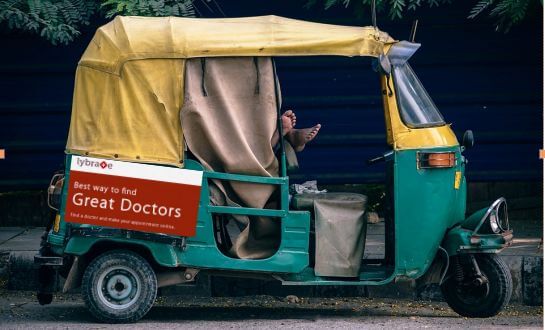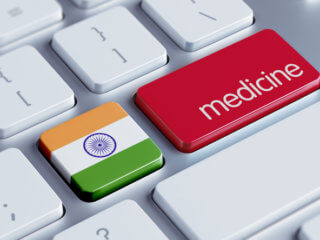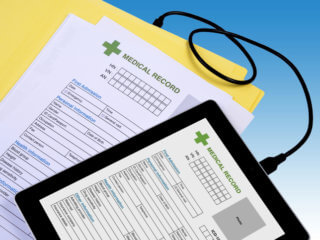How technology transforms healthcare in small town India?
In an era where everything is going digital and technology is being used to improve the way of living, there has been a need for countries to embrace technologies or be left in the dark ages.
India had been lagging behind in terms of embracing technology in healthcare for a long period of time. With the increasing need for digitization, digital health is being adopted in India with the emergence of different technologies such as telemedicine, cloud database and eMamta. This has seen increased access to healthcare and health-related resources. Patients are now able to consult doctors online, while patients records can be stored online for easy access by different doctors for proper diagnosis.
India is a highly populous nation with about 1.3 billion people.This had made access to resources such as quality healthcare a problem for many especially those who are from rural areas. The need for accessibility saw the rise of digital health. Digital health has made what had seemed like an impossible mission, possible. Tier II cities in India are classified as to having a population ranging between 50,000 and 100,000 while tier III cities have a population of about 20,000 to 50,000.
Research shows that approximately 67% of Indians live in rural areas which means that those living in tier II and III cities in the country which means that patients are rarely attended to when admitted in the hospitals.
Statistics indicate that one doctor is assigned to close to 1000 patients within the hospital, therefore, the introduction of healthcare tech companies in these cities is a welcomed endeavour for most Indians.
Tier III cities tend to appreciate the introduction of digital healthcare because it reduces the rate of hospitalization in the few medical centres in the city. Tier II cities value the presence of tech companies that invest in healthcare systems because it ensures that all patients gain access to quality medical attention.
The Grow Fit app allows users in tier II and tier III cities to consult with professional doctors and nurses in planning the best recovery plans for Indian patients outside large metropolitan regions. The application allows medical personnel to recommend the best treatment plan based on the medical science and behavioural insights retrieved from the chats supported by the application. Tier II and tier III cities are quickly embracing digital healthcare by encouraging health and technology related startup businesses to enforce their medical practice within the population.

Image courtesy of Policyx
The government has been working to encourage innovation by the Indian people and has set up policies that provide an enabling environment such as the National Intellectual Property Rights Policy 2016 and the Startup India policy which is meant to reduce on bottlenecks and bureaucracy in running startups. It is estimated that digital health market is worth $100 billion and this will grow to $280 billion in the next two years. This growth will catapult India to be among the top 3 largest market in the healthcare industry in the world.
Tier B and C cities in India embrace digital health
The government of India has divided cities into different tiers so that they are able to allocate house rent allowance to government employees. This method is used to ensure that there is equality when it comes to sharing of resources. Examples of cities in these two tiers include Agra, Tiruppur, and Vadodara among many others.
These cities are quickly embracing the use of technology to access healthcare with a majority of the population from these places having access to smartphones and the internet. This has largely affected how they receive these much-needed services. Smaller cities have also not been left behind when it comes to adoption of digital healthcare.
The different solutions that are available in these cities include “consult a doctor through a video chat”, ordering for medicine online, accessibility to information for people wherever they are and thus creating awareness.
The people who are majorly embracing these digital health solutions include doctors, elderly persons, pharmacists, those in palliative care, people in inaccessible areas and other patients in general. The most likely persons to use these solutions are populations with access to technology. Doctors, medical suppliers, and general patients are also likely to use these solutions as they directly affect them.
There are many different digital solutions that have been made available for people in these cities. Some of these include:
- mHealth: It enables users to get info about patients from cloud storage which can be used to give a proper diagnosis. mHealth allows accessibility of a patient’s record across the board for doctors which can enable one to refer to a patient’s history as in cloud storage
- Telemedicine: It allows patients to connect with doctors through video chat using their mobile phones.
- e-Mamta: It is a mother and child tracking system by the Government of Gujarat developed in collaboration with NRHM and NIC.
- Netmeds: It is an online pharmacy which provides medicine to patients on request.
- AMBER health: It is an application that allows for users to call for emergency help anywhere they are.
- SimplyBlood: It is a digital blood donation platform.
Digital health startups targeting smaller cities and towns in India
Small cities and towns are part of the key contributors to revenues that are generated in the digital health space.This serves to indicate that though the market share, for now, may not compare to what the big cities generate; the small towns and cities play a big role that cannot be ignored.
The different health startups that are working in smaller cities and towns include:
- Netmeds: It is an online medical store where people can make their drug order. This online company is providing services in Chennai, Bangalore, Vijayawada.
- PurpleDocs: Works in capitalizing on human talent especially with mobilizing doctors. It is located in Gujarat.
- Practo: A platform that allows patients to chat with doctors, order medicine and even book for tests. Its headquarters are located in Bangalore.
- Portea Medical: Offers home visits to patients. It provides its services in Vijayawada.
- Lybrate: Offers online consultations by patients. This online company provides its services in Delhi, Mumbai and Bangalore.
- Karma Healthcare: One of the highly appreciated and successful healthcare venture which is setting up digital clinics in rural India.
These services are meant to increase accessibility to healthcare services to those living in these areas which have been the hurdle for them before.
These startups are capitalizing on technologies such as the emergence of the internet and devices such as smartphones, social media platforms and other e-commerce platforms that make healthcare more accessible. Users are gradually adopting these technologies as they work to their advantage and enable them to access health care easily.
These startups also garnered a good deal of users depending on the services they offer. A good example would be Portea Medical brags of over 10,000 users in these cities while Lybate’s has slightly above 40% of its users originating from these cities and towns.
The future of digital health in small town India
Things are currently looking up for digital health startups in India with a likelihood of an exponential growth as people get to embrace technology.
Those who had for long, laid their focus on the big cities are currently diversifying and expanding their digital health services in small cities and towns as there is a big market for their products and services here.
Though with the potential for growth in these markets, some of the challenges that are being faced include, inadequate awareness amongst users, inadequate infrastructure, inadequate internet bandwidth, not having enough talent such as doctors and illiteracy levels amongst user.
There is, therefore, a big need to create more awareness around digital health, increase human resources, invest in proper infrastructure, increase in literacy levels and invest in providing better Internet facilities.
Stakeholder involvement will be key in solving most of these issues. The government, for example, should focus on better policies that work in accelerating growth for startups in smaller towns in India, awareness should also be created for other users such as doctors and patients to allow for acceptability of digital solutions in the health sector!
If these solutions are implemented and in an aggressive manner, there can never be enough possibilities that we can highlight as this will be beyond us.
This may even put India in the list of top digital health players in the international market considering the sheer size of population, high scope for growth and innovation.
The stakeholders involved should, therefore, ensure that each plays their role best. This will facilitate an exponential growth that cannot be stopped by anything!
Image credit: www.pixabay.com

















